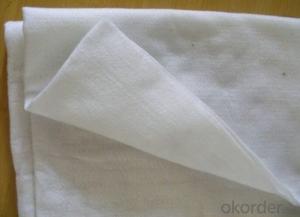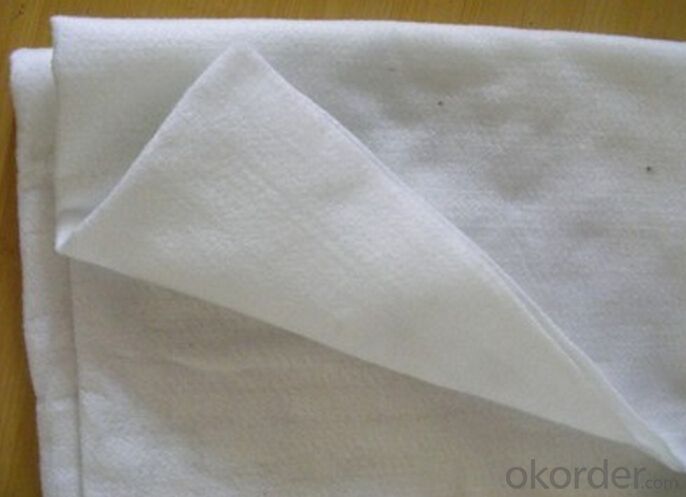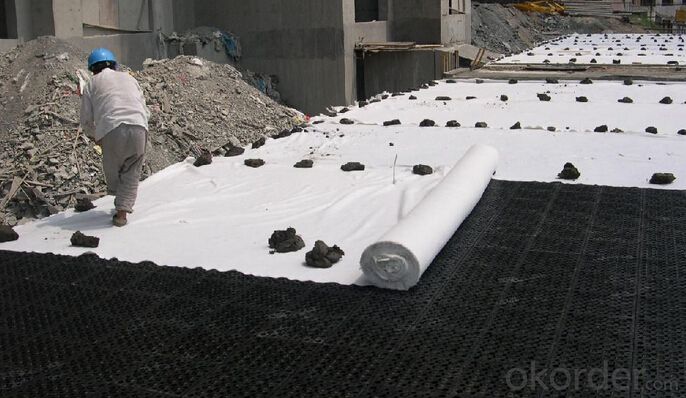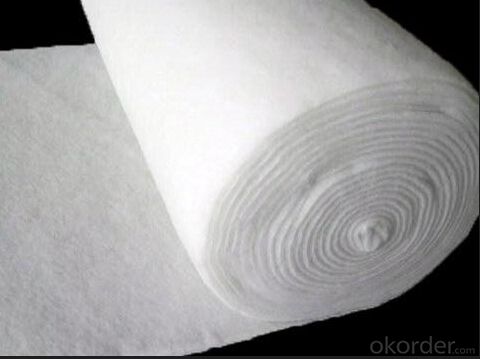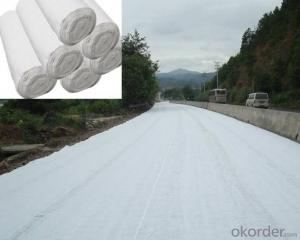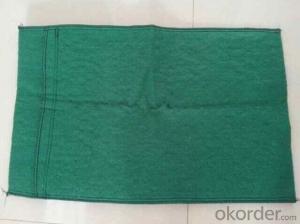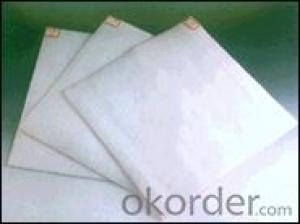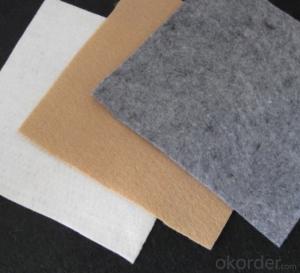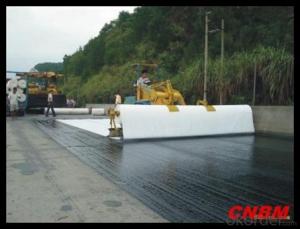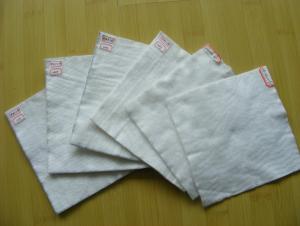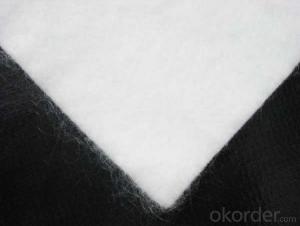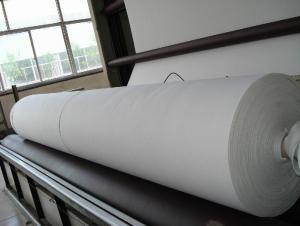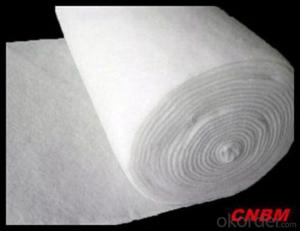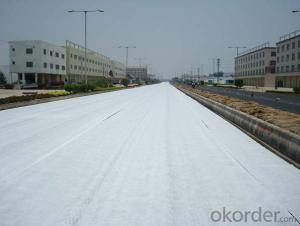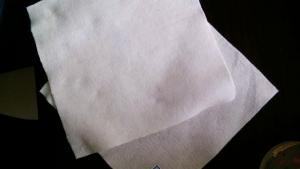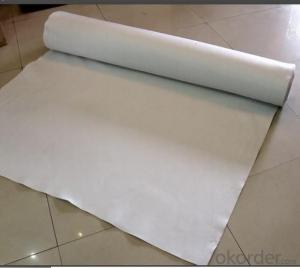Nonwoven Geotextile Filter Fabric for Short Fiber Polyester Drainage
- Loading Port:
- China main port
- Payment Terms:
- TT OR LC
- Min Order Qty:
- 30000 m²
- Supply Capability:
- 300000 m²/month
OKorder Service Pledge
OKorder Financial Service
You Might Also Like
1,Brief Introduction of Short Fiber Polyester Geotextile for Drainage
Material:Polyester
Weight:100~800g
Width:1~6m
Length:30~100m;or as your request
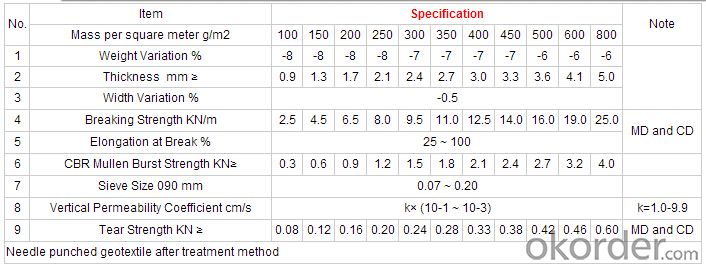
2,Feature of Short Fiber Polyester Geotextile for Drainage
Good flexibility,permeability,filtration,separation and easy for construction,acid-proof, alkali-proof, sun-proof, mildew-proof and worm-proof. excellent water permeability, high tensile strength and shock strength, non-toxic and harmless.
3,Package of Short Fiber Polyester Geotextile for Drainage
Packed in rolls or as per your request
4,Application of Short Fiber Polyester Geotextile for Drainage
Used in the area of highway, airport, railway,dam, reclamation for filtration, separation drainage and protection. Our product can be used to keep soil from losing, collapsing, shocking and stable the base. Because of good wind resistant and frost resistant, the geotextile can also be used as protection of trees in winter.
5.FAQ
We have organized several common questions for our clients,may help you sincerely:
1>How about your company?
A manufacturer & supplier focuses on the production of geo textile and geo bag etc. We have exported this product to Amereica, Europe and South East Asia. Customized product is also available based on your detailed requirements.
2> What's the MOQ ?
We kindly recommend 1x40'HQ as the price would be economical based on large loading quantity.
3>How long can we receive the product after purchase?
It takes about 1 to 2 weeks to finish the production based on the specific production schedual. Then it will depend on the shipping time from loading port to the destination port.
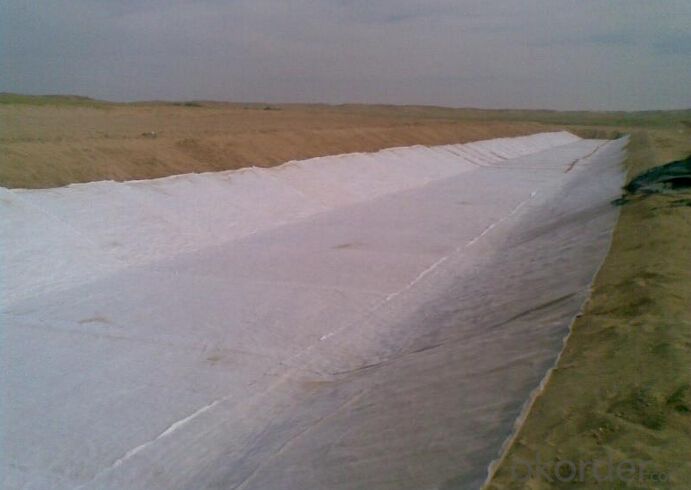
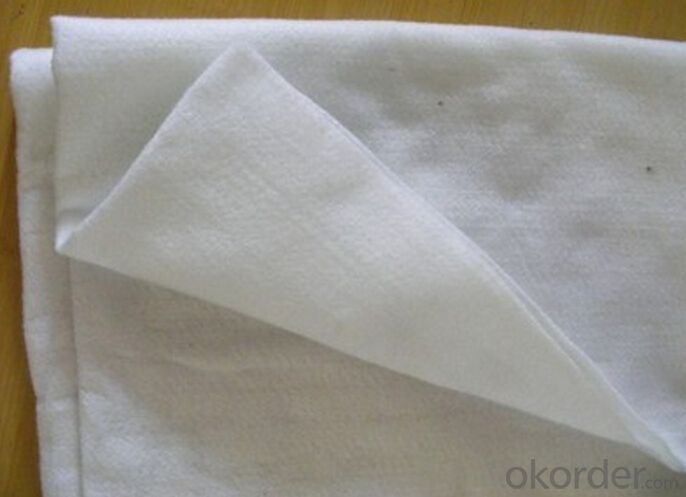

- Q: Can geotextiles be used in groundwater control?
- Yes, geotextiles can be used in groundwater control. They are commonly employed as part of drainage systems to filter and separate different layers of soil, preventing the clogging and migration of fine particles. Geotextiles can also be used in conjunction with geosynthetics to create impermeable barriers, preventing the seepage or flow of groundwater in certain applications.
- Q: How do geotextiles help in stabilizing railroad tracks?
- Geotextiles help in stabilizing railroad tracks by providing reinforcement and separation between the subgrade and the ballast layer. They prevent the mixing of fine particles from the subgrade with the ballast, thereby maintaining its integrity and preventing track settlement. Geotextiles also distribute the load evenly, reducing the stress on the subgrade and improving track stability and longevity.
- Q: How do geotextiles affect soil erosion rates?
- Geotextiles can significantly reduce soil erosion rates by acting as a protective barrier. They prevent soil particles from being washed away by water or blown away by wind, while still allowing water to pass through. This helps to stabilize the soil, improve its structural integrity, and promote vegetation growth, ultimately leading to a reduction in erosion rates.
- Q: Can plant roots penetrate geotextiles? Which kind of similar material can keep soil and water and let the plant roots pass through it?
- Of course. The roots of plants are omnipotent, and it has a strong vitality. It is small, but its power is infinite. It is also because it is small, it makes it seamless no omnipotent. It can wear the river across the sea, it can wear stone to break the ground, it is powerful you can not imagine, you do not see the cliffs on the grass, the king did not see the plow of the fern leaves!
- Q: Can geotextiles be used in the protection of shoreline structures?
- Yes, geotextiles can be used in the protection of shoreline structures. They are commonly used to stabilize and reinforce soil, prevent erosion, control sedimentation, and provide a barrier against wave action in shoreline projects. Geotextiles provide valuable support and protection to shoreline structures such as revetments, seawalls, and breakwaters by reducing the impact of waves, preventing soil erosion, and enhancing the overall stability of the shoreline.
- Q: Can geotextiles be used in coastal erosion control projects?
- Yes, geotextiles can be used in coastal erosion control projects. Geotextiles are often used in these projects as they provide effective erosion control by stabilizing the soil and preventing it from being washed away by waves and currents. They also allow for the filtration of water, reducing the impact of wave energy and helping to protect the coastline.
- Q: What are the different methods of installing geotextiles?
- There are several methods of installing geotextiles, including trench installation, direct placement, and mechanical installation. Trench installation involves excavating a trench and placing the geotextile in the trench before backfilling. Direct placement involves laying the geotextile directly on the ground surface and securing it with stakes or other means. Mechanical installation utilizes specialized equipment, such as a geotextile installation machine, to roll out and secure the geotextile in place.
- Q: What are the considerations for geotextile selection in landfill projects?
- The considerations for geotextile selection in landfill projects include factors such as the required strength and durability of the geotextile, its ability to resist punctures and tearing, its compatibility with the waste material, and its resistance to chemical degradation. Other factors to consider include the geotextile's permeability, its ability to retain soil particles while allowing for proper drainage, and its cost-effectiveness. Additionally, the geotextile should be selected based on its compliance with regulatory requirements and standards for landfill construction.
- Q: How do geotextiles help with soil separation and stabilization?
- Geotextiles help with soil separation and stabilization by acting as a barrier between different soil layers, preventing mixing and maintaining their individual characteristics. They also enhance soil stability by increasing its shear strength, preventing erosion, and improving drainage.
- Q: Concrete maintenance with geotextile, Tonglu how to buy
- Huazhi geotextile material manufacturers
Send your message to us
Nonwoven Geotextile Filter Fabric for Short Fiber Polyester Drainage
- Loading Port:
- China main port
- Payment Terms:
- TT OR LC
- Min Order Qty:
- 30000 m²
- Supply Capability:
- 300000 m²/month
OKorder Service Pledge
OKorder Financial Service
Similar products
Hot products
Hot Searches
Related keywords
